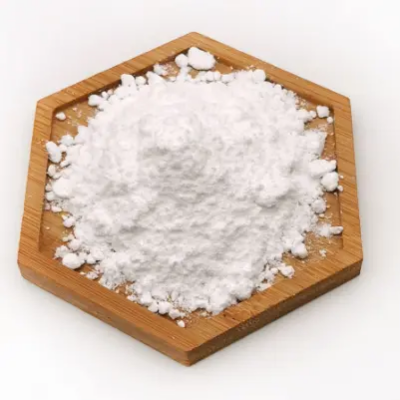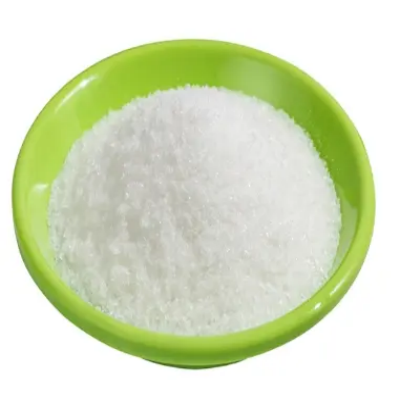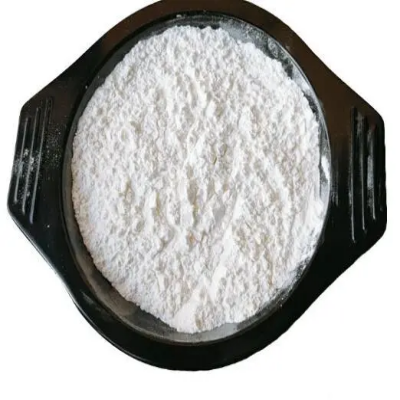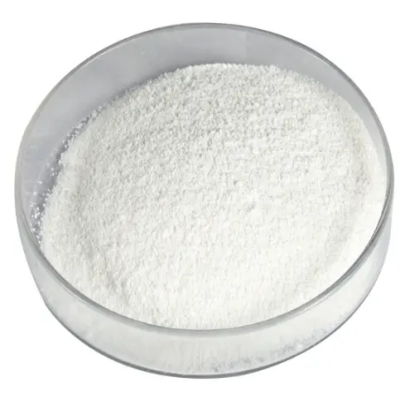-

2,5-dimethyl2,5-hexynediol CAS:142-30-3
2,5-Dimethyl-2,5-hexanediol is a chemical compound with the molecular formula C8H18O2. It belongs to the class of diols, featuring two hydroxyl (-OH) groups attached to a hexynyl chain with methyl substitutions at the 2 and 5 positions. This compound is notable for its branched structure and is commonly employed in various chemical applications due to its unique properties.
-

1H,1H,2H,2H-perfluorooctanesulfonicacid CAS:27619-97-2
1H,1H,2H,2H-perfluorooctanesulfonic acid, also known as PFOS, is a fluorosurfactant with a unique chemical structure. PFOS is a perfluorinated compound that is widely used in various industrial applications due to its surfactant properties. It is known for its high thermal stability and resistance to chemicals, making it valuable in the production of polymers, coatings, and electronics. PFOS is also used in specialty chemicals, cleaning agents, and certain medical applications, owing to its ability to reduce surface tension in liquids
-

3-(Cylohexylamino)-1-propanesulfonicacid CAS:1135-40-6
3-(Cyclohexylamino) -1-Propanesulfonic acid is an organic compound also known as CAPS. It is a ternary amine structurally related to ethanolamine. CAPS is a buffer that can be used in biochemistry and molecular biology experiments.
-

3-chloro-1-propyn CAS:624-65-7
3-Chloro-1-propyne is an organic compound with the formula C3HACl. It is a colorless liquid with a pungent odor. It is commonly used in organic synthesis and chemical research.
-

3-(1-pyridinio)-1-propanesulfonat CAS:15471-17-7
3-(1-Pyridinio)-1-propanesulfonate is a chemical compound (C8H10NO3S) utilized in diverse industrial sectors. It contains a sulfonate group attached to a pyridinium core, making it valuable for various applications.
-

1,4-Bis(2-hydroxyethoxy)-2-butyne CAS:1606-85-5
1,4-Bis(2-hydroxyethoxy)-2-butyne is a chemical compound (C8H14O4) utilized in diverse industrial sectors. It contains a butyne core with hydroxyethoxy functional groups attached, making it valuable for various applications.
-

3,3′-Dithiobis-1-PropanesulfonicAcidDisodiumSalt CAS:27206-35-5
3,3′-Dithiobis-1-Propanesulfonic Acid Disodium Salt is a chemical compound with the molecular formula C6H10Na2O6S4. It belongs to the class of sulfonic acids, featuring two sodium ions and two thiol (-SH) groups attached to a propanesulfonic acid backbone. This compound is widely utilized in chemical synthesis and analytical chemistry due to its unique sulfonic acid functionality.
-
![1,3-bis[3-(dimethylamino)propyl]urea CAS:52338-87-1](https://cdn.globalso.com/xindaobiotech/6FOL1BS0UMD0X9Z402187.png)
1,3-bis[3-(dimethylamino)propyl]urea CAS:52338-87-1
1, 3-BIS [3-(dimethylamino)propyl]urea is an organic compound whose chemical form is C₁₀H₂₄N₄O. It is a white solid commonly used in organic synthesis and medicine.
-

tert-Butyl ((2-hydroxycyclopentyl)methyl)carbamate CAS:1354957-79-1
Tert-Butyl ((2-hydroxycyclopentyl)methyl)carbamate, also known as compound X, is a versatile chemical compound extensively utilized across various industries, particularly in the realm of pharmaceuticals and agrochemicals. With the molecular formula C11H21NO3, this compound presents a unique structural configuration owing to the presence of a tert-butyl group, a hydroxylated cyclopentyl moiety, and a carbamate functionality. Its distinct molecular arrangement renders it a valuable intermediate in synthetic organic chemistry, serving as a cornerstone for the creation of diverse pharmaceutical and agricultural products. The strategic positioning of functional groups imparts desirable properties essential for drug design and crop protection.
-

N-Acetylneuraminic Acid (Sialic Acid) CAS:131-48-6
N-Acetylneuraminic Acid, commonly known as Sialic Acid, is a vital chemical compound found in biological systems, particularly in glycoproteins and glycolipids. With the molecular formula C11H19NO9, it serves essential roles in cell signaling, immune response modulation, and pathogen recognition. Its presence on cell surfaces influences various physiological processes, making it a significant molecule in molecular biology and medicine. Sialic Acid’s structural diversity and biochemical functions contribute to its importance in understanding cellular interactions and developing therapeutic interventions targeting diseases related to its dysregulation.
-

Teriparatide CAS:52232-67-4
Teriparatide is a recombinant form of human parathyroid hormone (PTH) used for the treatment of osteoporosis. With its molecular formula C181H291N55O51S2, teriparatide mimics the action of endogenous PTH, stimulating bone formation and increasing bone mineral density. Its unique mechanism of action promotes osteoblastic activity, leading to enhanced bone strength and reduced fracture risk in patients with severe osteoporosis. Teriparatide is administered via daily subcutaneous injections and represents a significant advancement in the management of osteoporosis, offering a targeted approach to improve bone health and reduce the burden of fragility fractures.
-

Sodium copper chlorophyllin CAS:28302-36-5
Sodium copper chlorophyllin is a water-soluble derivative of chlorophyll, a green pigment found in plants. It is commonly used as a food coloring agent and dietary supplement due to its natural source and potential health benefits. Sodium copper chlorophyllin is derived from chlorophyll through a process that replaces the magnesium ion with copper and adds sodium for improved solubility. With its vibrant green color and antioxidant properties, sodium copper chlorophyllin finds applications in food, cosmetics, and pharmaceutical products.

